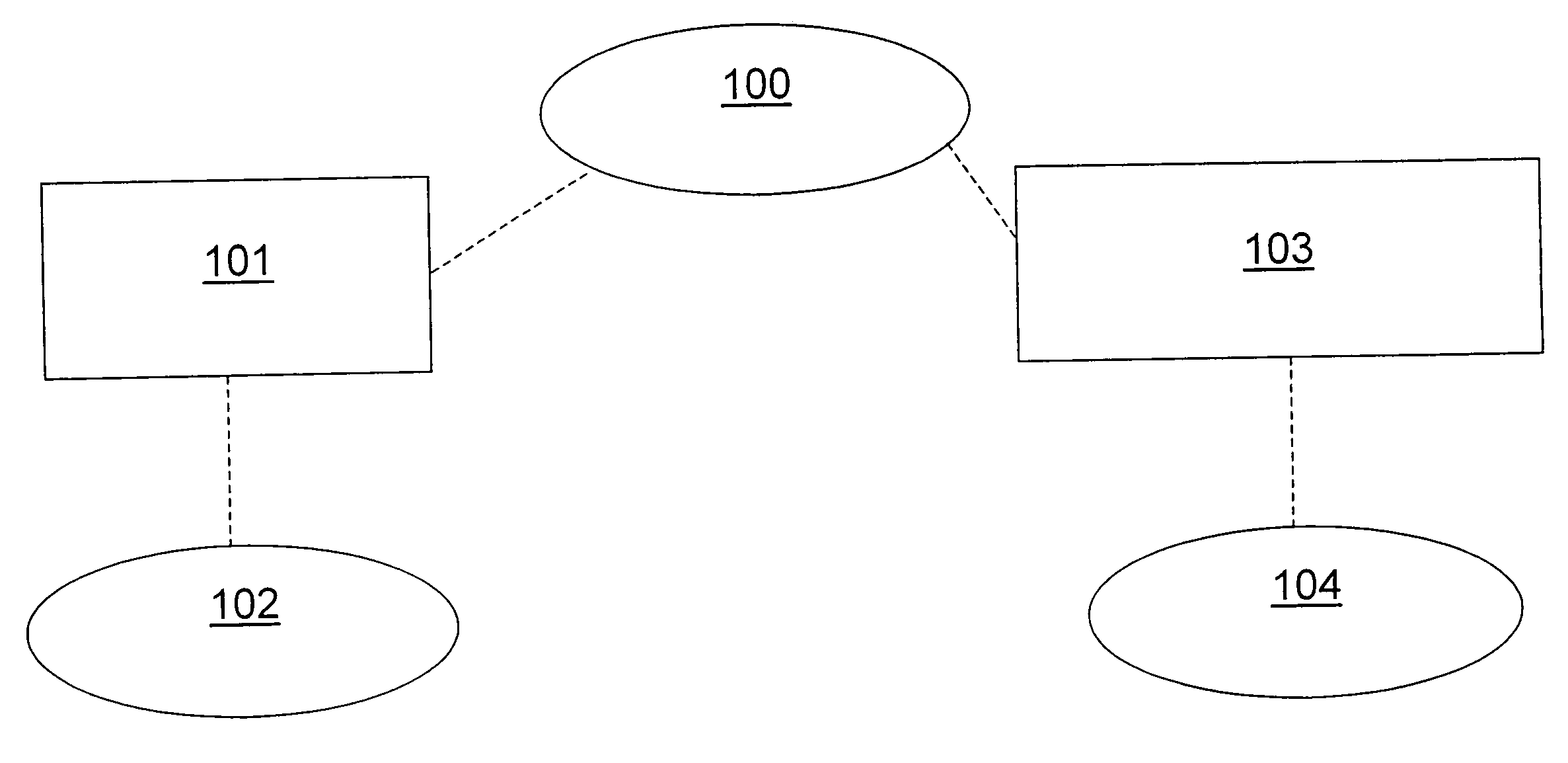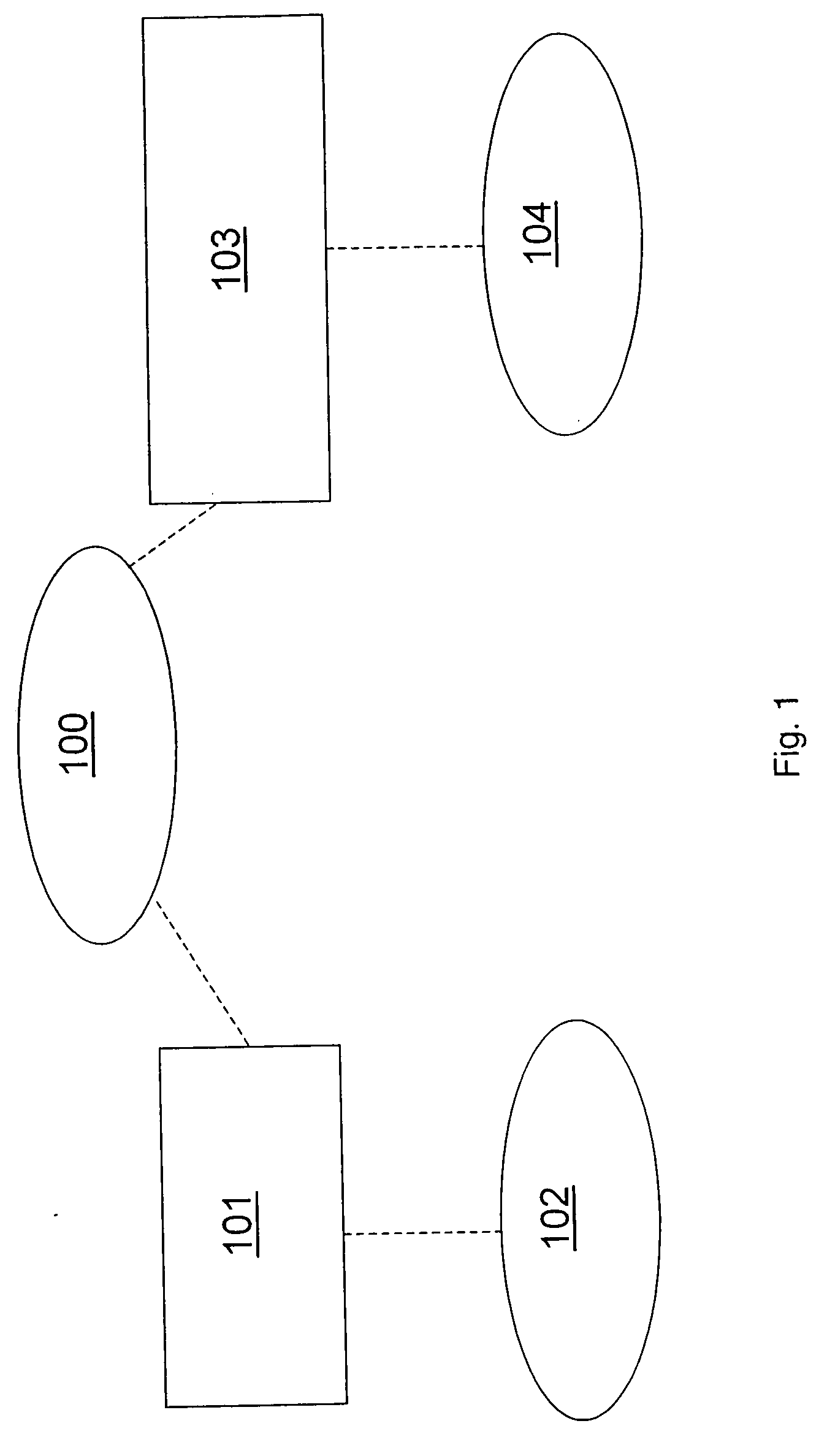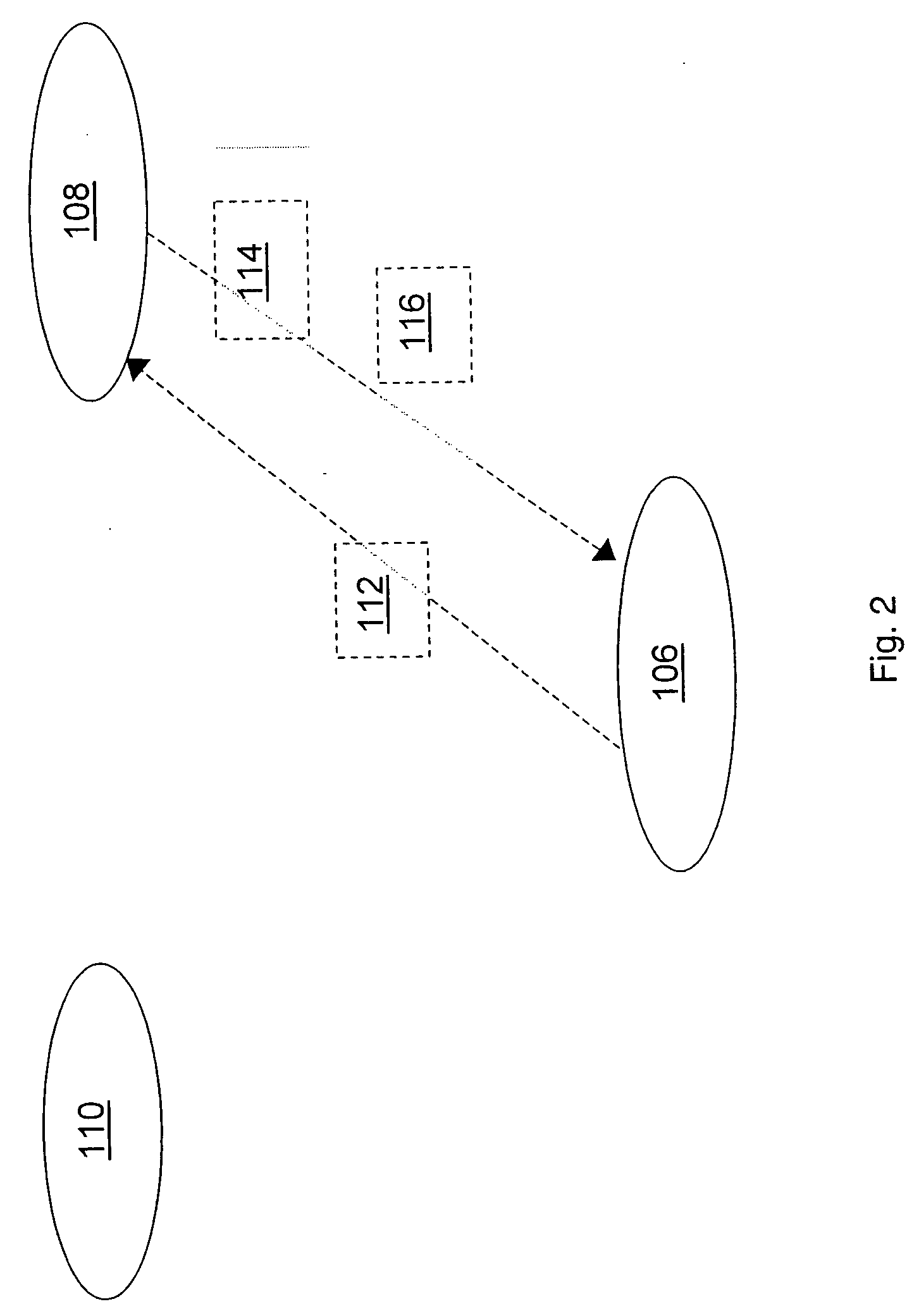Authorisation system
a technology of authorisation system and authorization system, applied in the field of authorisation system, can solve the problems of misuse, third party inability to gain access to it, increase the complexity of web servers with ssl capability installed, etc., and achieve the effect of more security
- Summary
- Abstract
- Description
- Claims
- Application Information
AI Technical Summary
Benefits of technology
Problems solved by technology
Method used
Image
Examples
Embodiment Construction
[0066]FIG. 1 shows the relationship in which the present invention operates. A service provider 100 is related to both a merchant 102 and a customer 104 through a merchant account 101 and customer account 103 respectively. The service provider 100 is arranged to debit or credit the accounts when a transaction is authorised. The service provider 100 contains a secure database which stores the balance of the merchant account 101 and the customer account 103.
[0067] In order that the service provider 100 can recognise communications from the merchant 102, the service provider 100 shares a secret with the merchant 102. The shared secret enables the service provider 100 and merchant 102 to authenticate received encoded information as having originated from the other party. This shared secret could take the form of a password that is encoded using a one way hash function. The customer 104 and service provider 100 also share a secret to enable the service provider 100 to authenticate the c...
PUM
 Login to View More
Login to View More Abstract
Description
Claims
Application Information
 Login to View More
Login to View More - R&D
- Intellectual Property
- Life Sciences
- Materials
- Tech Scout
- Unparalleled Data Quality
- Higher Quality Content
- 60% Fewer Hallucinations
Browse by: Latest US Patents, China's latest patents, Technical Efficacy Thesaurus, Application Domain, Technology Topic, Popular Technical Reports.
© 2025 PatSnap. All rights reserved.Legal|Privacy policy|Modern Slavery Act Transparency Statement|Sitemap|About US| Contact US: help@patsnap.com



